Pimentón or Spanish Paprika is one of the essential ingredients of Spanish cuisine and the most popular seasoning after salt.
It is used in many popular Spanish Food dishes like Paella, Patatas Bravas, and to prepare chorizo.
What is Spanish Pimentón?
Spanish Pimentón is a red powder made from dried peppers.
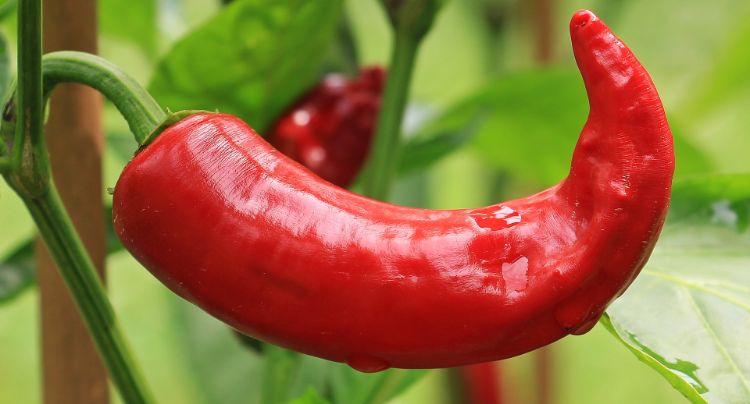
Where does Pimentón or Spanish Paprika come from?
Spanish paprika is made from red chile peppers that are originally from America.
It is said that Christopher Columbus brought the peppers to Spain during his second trip.
It is also said that he served the paprika to the King and his queen, Ferdinand and Isabella.
Monks passed them along to other brothers, which is how they were spread from the Extremadura region to Spain.
How is Spanish Paprika or Pimentón produced?
In La Vera, in Spain’s Extremadura region, the pepper seeds get planted in March and harvested from September to November.
The actual process of obtaining the paprika is divided into two phases: Drying and grinding.
The drying phase:
The drying phase takes around two weeks.
The de la Vera peppers get smoked-dried in little drying houses with a huge amount of oak wood.
The farmers place the peppers on racks above the fire and turn them once a day by hand. This gives the pimentón its smoky flavor.
The grinding phase:
Once the peppers are dry, farmers remove the stalks and part of the cores.
Then, the peppers get grounded in mills that have stone wheels. It is essential to do the grinding process slowly as heat can influence the flavor and color of the paprika.
Types of Pimentón (Spanish Paprika)
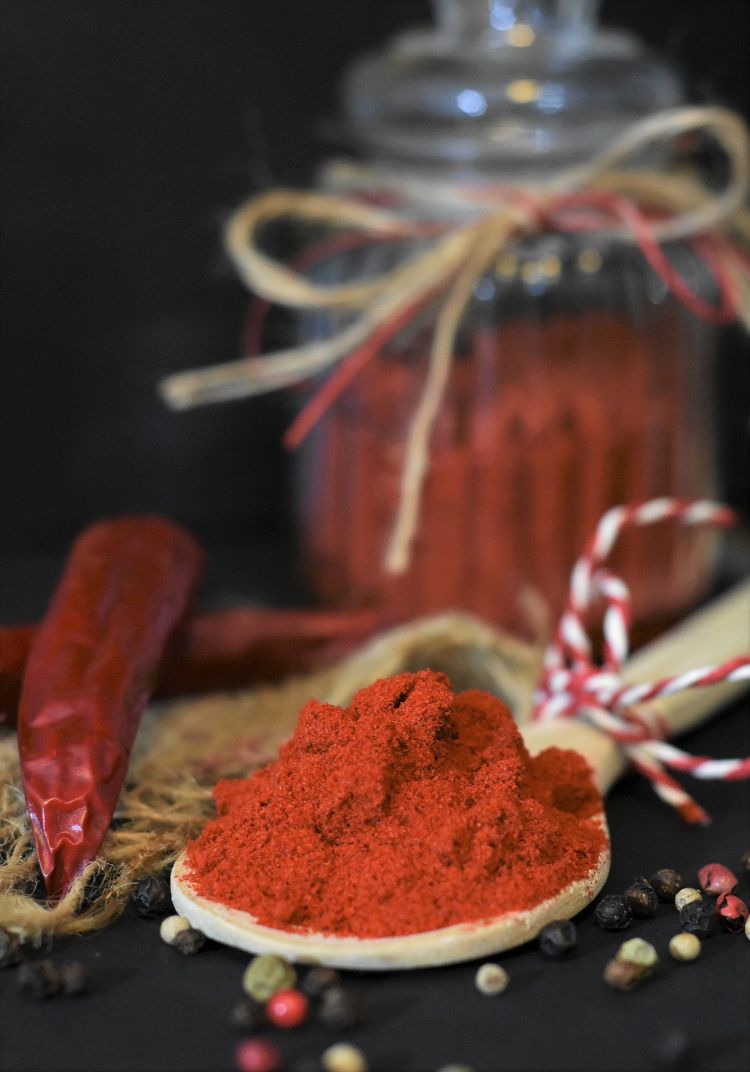
1. Pimentón Dulce (Sweet Paprika)
Pimentón dulce, sweet paprika has a smoky, intense flavor.
It is, amongst others, used in paella, patatas bravas, for roasted meats, chicken, or fish.
2. Pimentón Agridulce (Medium Hot Paprika)
Pimentón Agridulce (Medium Hot Paprika) is produced with long, dark red pepper.
This bittersweet paprika has a medium heat or spiciness and a smoky, rich flavor. You can use it for, amongst others, stews and sauces.
3. Pimentón Picante (Hot Paprika)
Pimentón Picante (Hot Paprika) is made from various types of long red peppers.
It is a spicy option and can be used, for example, for barbecued meats and roasted potatoes.
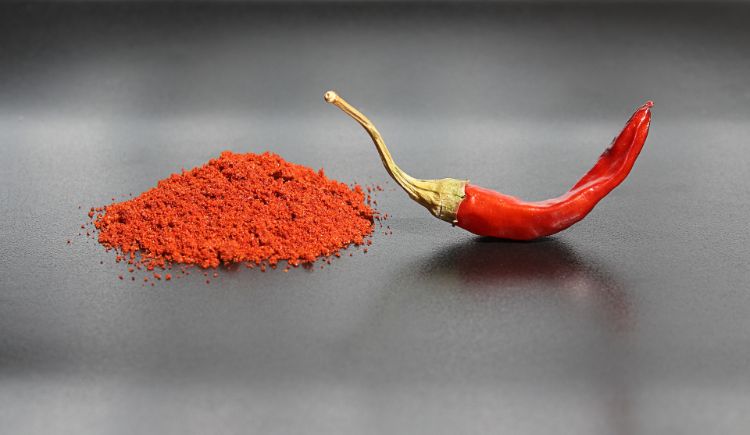
Our Recommended Pimentón (Spanish Paprika) Products
La Dalia is the original brand of Pimentón de La Vera and was founded in 1913.
The family-owned company used traditional production methods for generations to produce the finest quality pimentón.
Nowadays, they are still using stone mills to produce this flavorful smoked paprika.
Pimentón de la Vera is paprika produced from luscious red peppers (pimientos) growing in the La Vera microclimate of Spain’s Extremadura region.
During the harvesting in fall, the peppers get smoke-dried over oak fires. Once they are dry, they get grounded into a fine powder.
There are three different versions of Pimentón de la Vera available:
1. Pimentón de la Vera Agridulce by La Dalia
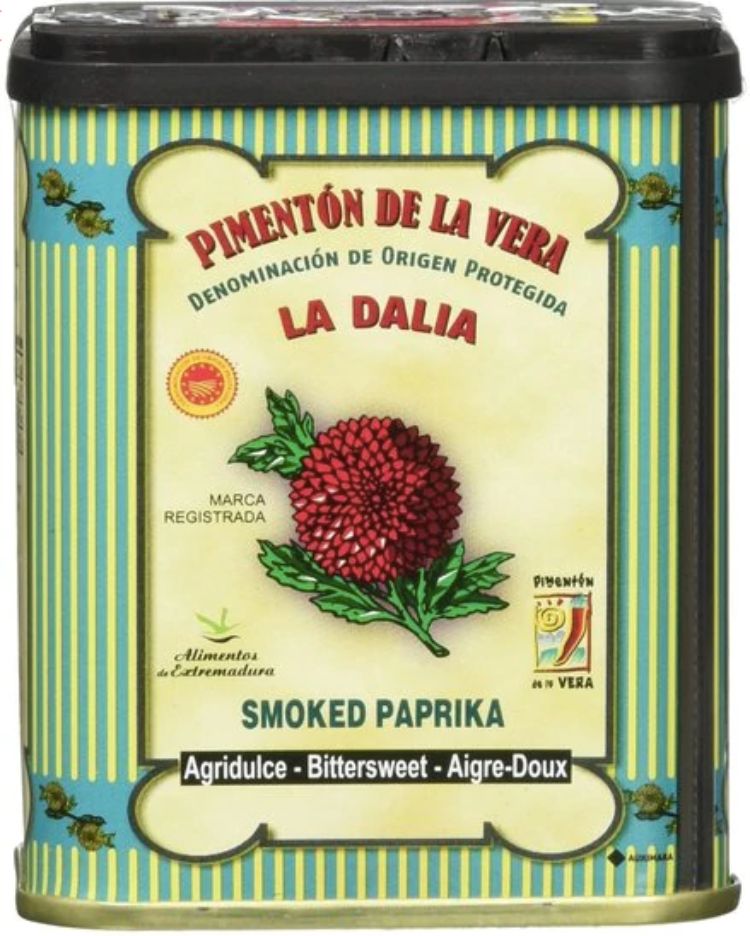
Pimentón de la Vera Agridulce is bittersweet smoked paprika.
2. Pimentón de la Vera Dulce by La Dalia
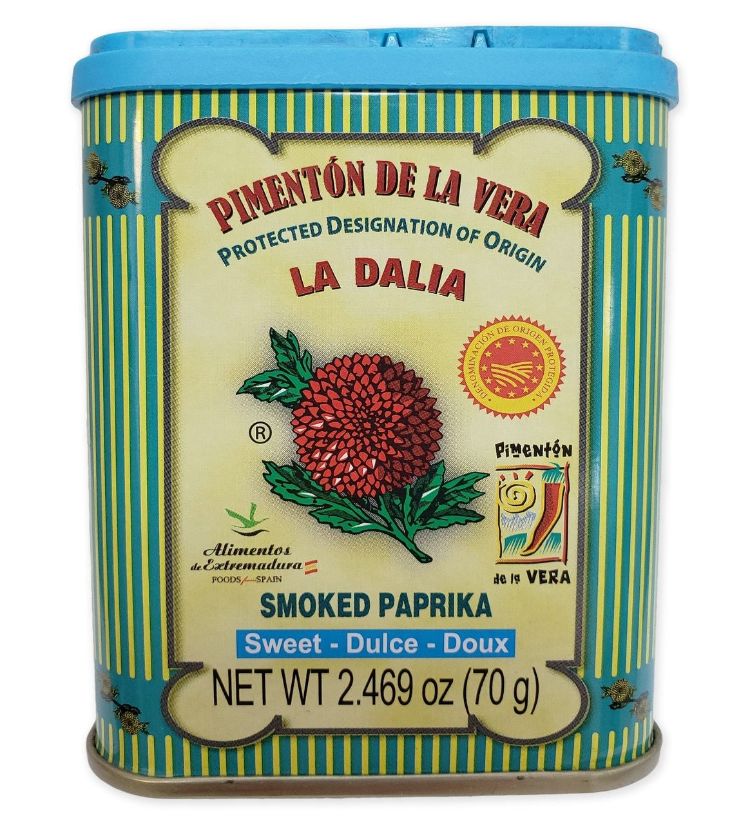
Pimentón de la Vera Dulce is the sweet version of the de la Vera smoked paprika.
3. Pimentón de la Vera Picante by La Dalia
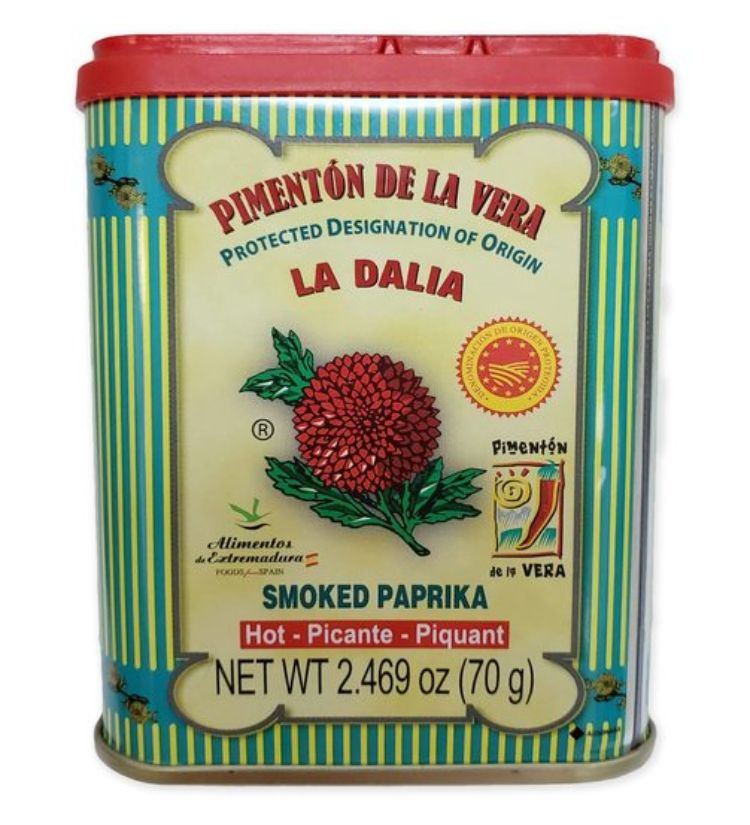
Pimentón de la Vera Picante (Hot Smoked Paprika) is the spicy version of Spanish Paprika.
Tip: Save money and purchase the La Dalia Smoked Paprika Trio Pack online.
Recipes that use Spanish Paprika or Pimentón
Spanish Paella is probably the most popular dish that uses Spanish Paprika.
For the spicy sauce of the Patatas Bravas Pimentón dulce and Picante is used. To make the sauce spicy, it is important to use more of the spicy paprika.
Another delicious dish for which Spanish Paprika is used is Gambas al Ajillo (Garlic Shrimps).

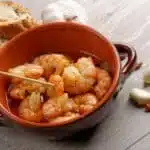

Leave a Reply